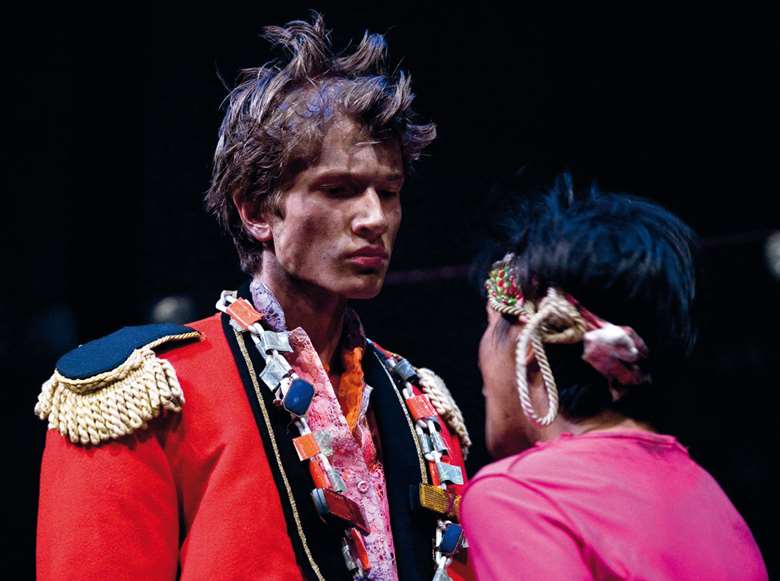Play for performance: The Red Helicopter
Tessa Walker
Saturday, February 1, 2020
Each issue of D&T we bring you a page-to-stage focus on a play for performance with your students. This issue, Tessa Walker introduces post-apocalyptic tale, The Red Helicopter

LUCY CULLEN
I was lucky enough to direct the first production of The Red Helicopter a decade ago in 2010 when it was written for, developed with and performed by an incredibly talented cast of young people at the Almeida. Set in 2057 it tells the story of a group of young people who have been abandoned in the ‘exodus’, left to fend for themselves in a world without adults crumbling in the wake of an environmental catastrophe. Those left behind are from care homes or from families who couldn't afford to take their children with them who, already abandoned by the world, begin to create their own society, language and means of survival – all presided over by the powerful and enigmatic Daddy.
The play is set on the top floor of a deserted tower block, the other floors hemmed in by rising snow drifts, where Daddy and his acolytes rule over the kingdom; a world that has given its inhabitants belonging, structure and a sense of place but is, it becomes increasingly clear, built on dark secrets and a fragile hierarchy. When Zadie, a young woman who has begun to question the regime, dies in suspicious circumstances and Ridley, a stranger to the community, arrives, Daddy's regime begins to crumble.
Key themes
It is fascinating re-visiting the play now: 10 years on it feels more relevant than ever. It's hard not to hear the current conversation about the devastation caused by climate change as you watch the community of the play try and survive in the aftermath of this monumental disaster. As social divides grow, there is a story here too about an abandoned generation in which only those with money and connections survive. It's hard also to ignore that this is about a generation of young people who hold some blame up to those who have gone before for the state their world has been left in. All these themes highlight the volume that has been turned up on these conversations over the last decade, and it is partly this that makes it such a potent and powerful play for young people to explore, interrogate and bring to life.
It would do the play an injustice though to say it is only interested in these themes, because it is also about friendship and loyalty and love. It focuses on community and the need for us to be part of something bigger than ourselves and shows family to be a model that we will return to again and again. It is also an absolute gift for any director and performer to work on. It offers a tightly woven, brilliantly structured plot, full of characters who are complex and contradictory, funny and kind, mostly just trying to do their best. The world is vividly drawn, but what French has done too is create a lot of space in the play for the collective imagination working on a production of it to take flight.
Staging
It's a huge treat to discover what it might look like, how it might feel. What architecture, clothing and colours, so important to status in this world, would exist in 2057? How different and how similar would it feel to our world? Music plays a huge part in the story too. It is described variously as ‘hypnotic’, ‘tribal’ and ‘wild’ accompanied by instruments that have been made from household objects. There is an exciting offer here to work out what this means for your production, what is the hypnotic, tribal and wild for you and the young people in your company? What does this music mean for and to the characters? How do they respond? What are the most interesting, odd, surprising objects you can find to bring this music to life?
There is lots of exciting action in the play too; there's fights, dancing and ceremonies. There's staging that requires multiple worlds, stories and conversations existing in the same place at the same time. Perhaps most enticing though are the characters and the challenge of bringing them to life, of finding out what they feel, what they want and need. Questions useful in the making of the play the first time around were about who these children were before the exodus, what their lives were like then and now. It's crucial to explore too what their relationships are with each other, and how this is defined by the rigid status of Daddy's regime. It's always helpful to ask the questions of where they start the play and where they end up, of what the events in the story are that change them? In wanting to bring the vibrancy, potency and power of the play to life, it's really knowing who these characters are that will offer the best and most interesting road to this.

